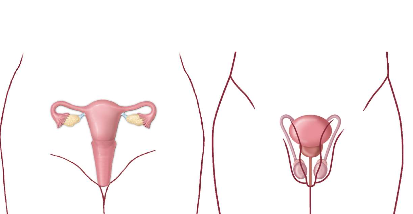
Getting to Know: Understanding Sexually Transmitted Infections (STIs)
Sexual health is a crucial aspect of overall well-being, and being informed about sexually transmitted infections (STIs) is essential for maintaining a healthy lifestyle. Infections that can be contracted through sexual activity are referred to as venereal diseases. Some of these STIs are even covered under the Infection Control Act, which mandates testing and treatment for those at risk. Let’s delve into the realm of STIs, exploring their types, significance, and the steps to take if you suspect infection.
What are Sexually Transmitted Infections (STIs)?
STIs, also known as venereal diseases, are infections that can be transmitted through sexual contact, including vaginal, anal, or oral intercourse. They can have a significant impact on one’s health and require proper attention and treatment.
Examples of Common STIs:
STIs come in various forms, each with distinct characteristics and potential consequences. Some of the prevalent STIs include:
- Flat Lice (Pubic Lice): Small parasitic insects that infest the pubic hair and cause itching and discomfort.
- Gonorrhea: A bacterial infection that can affect the genital, rectal, and throat areas, often causing pain and discharge.
- Herpes: Caused by the herpes simplex virus, this infection can lead to painful sores around the genitals or mouth.
- Hepatitis B: A viral infection that affects the liver and can be transmitted through sexual contact, leading to long-term health issues.
- HIV/AIDS: Human Immunodeficiency Virus (HIV) weakens the immune system, potentially progressing to Acquired Immunodeficiency Syndrome (AIDS), a severe condition.
- Chlamydia: A common bacterial infection that often presents with no symptoms but can lead to complications if left untreated.
- Condyloma (HPV): Human Papillomavirus (HPV) causes genital warts and is linked to various cancers, emphasizing the need for vaccination.
- Mycoplasma of the Abdomen: Mycoplasma infections can cause abdominal discomfort and are among the STIs requiring attention.
- Syphilis: A bacterial infection with multiple stages, potentially causing serious health issues if not treated promptly.
When Should I Seek Care for STIs?
Recognizing the signs of a possible STI and seeking prompt care is crucial for your health and the well-being of your sexual partners. Here are some key considerations:
- Suspicion of Infection: If you suspect you might have contracted an STI due to symptoms such as unusual discharge, pain, or discomfort, seeking care is imperative.
- Similar Symptoms: Many STIs share common symptoms, making it essential to consult a healthcare professional for accurate diagnosis and proper treatment.
- Infection Control Act: If a suspected disease falls under the Infection Control Act, testing is mandatory. This emphasizes the importance of addressing such concerns promptly.
- Testing and Clinics: To get tested, you can visit a specialized STI or STD clinic, youth clinic, midwife clinic, or a health center that offers sampling services.
In Conclusion: Taking Control of Your Sexual Health
Understanding and being proactive about your sexual health is essential for a fulfilling and healthy life. Sexually transmitted infections can have serious consequences, making regular testing, safe sexual practices, and open communication with healthcare providers and partners essential components of maintaining well-being. By staying informed and seeking appropriate care when needed, you can take control of your sexual health and contribute to a healthier future.